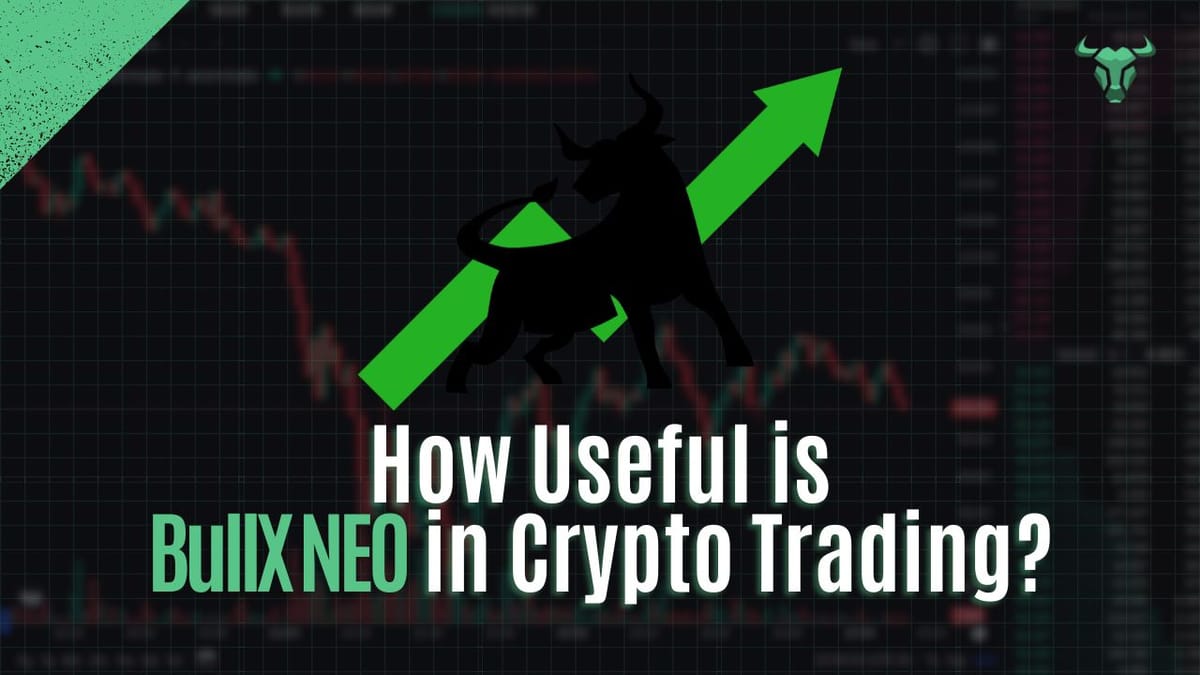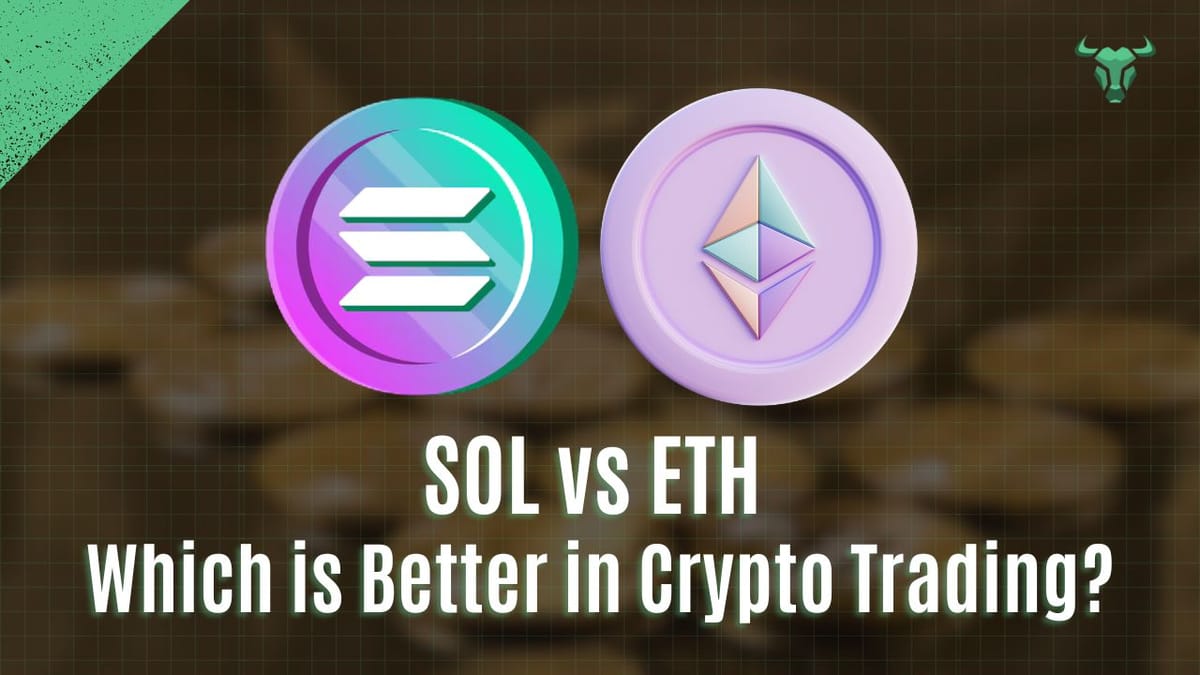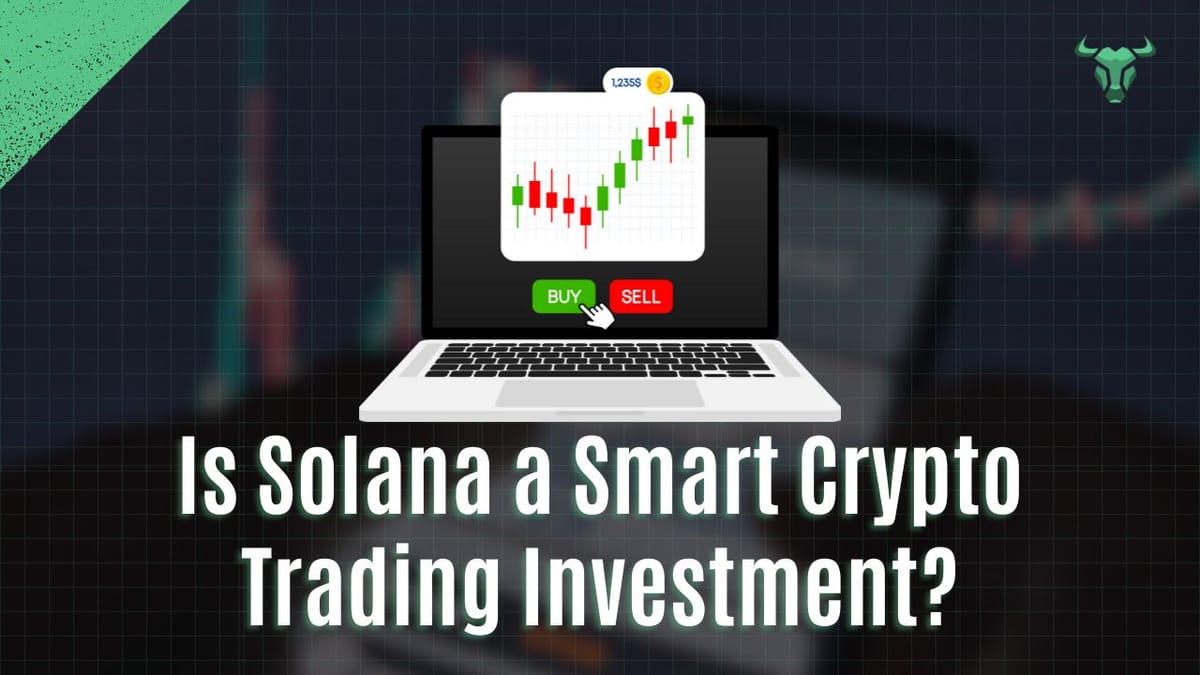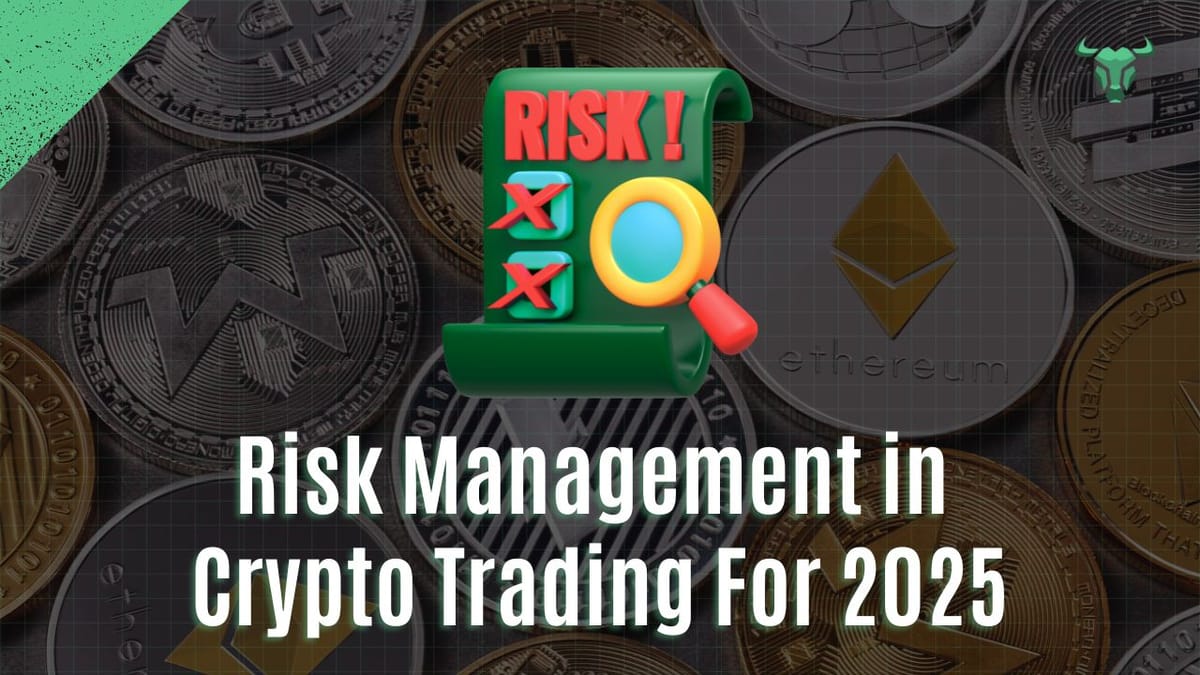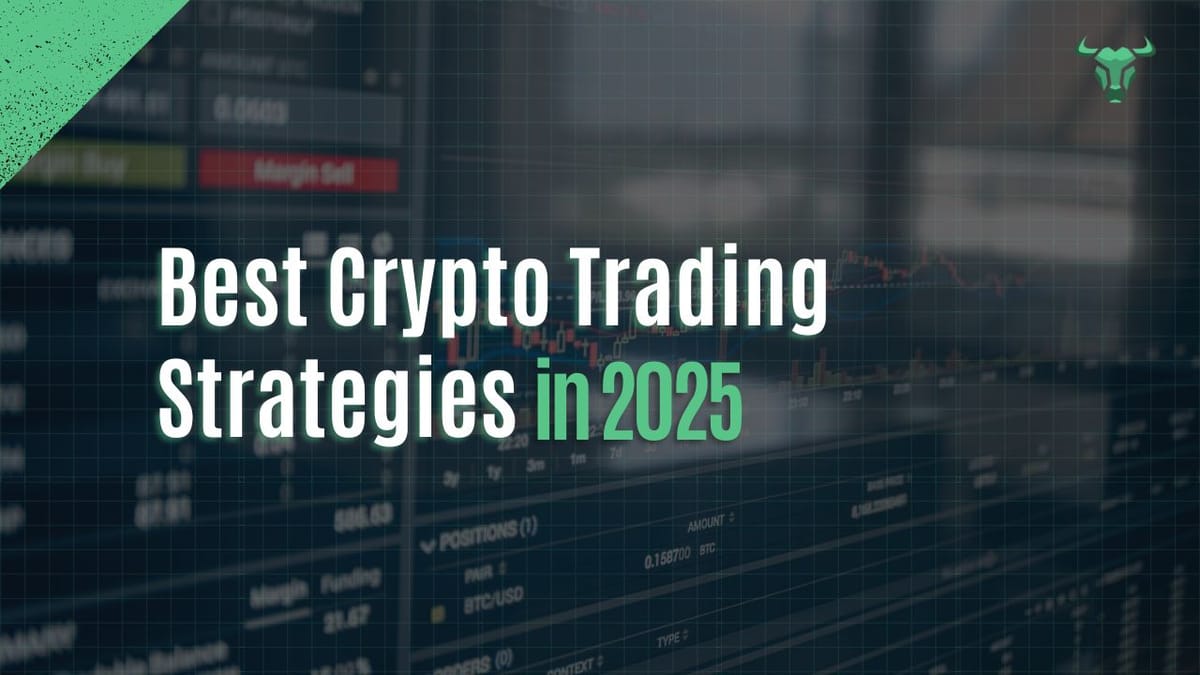Swing Trading Crypto: Strategies for Profit in 2025
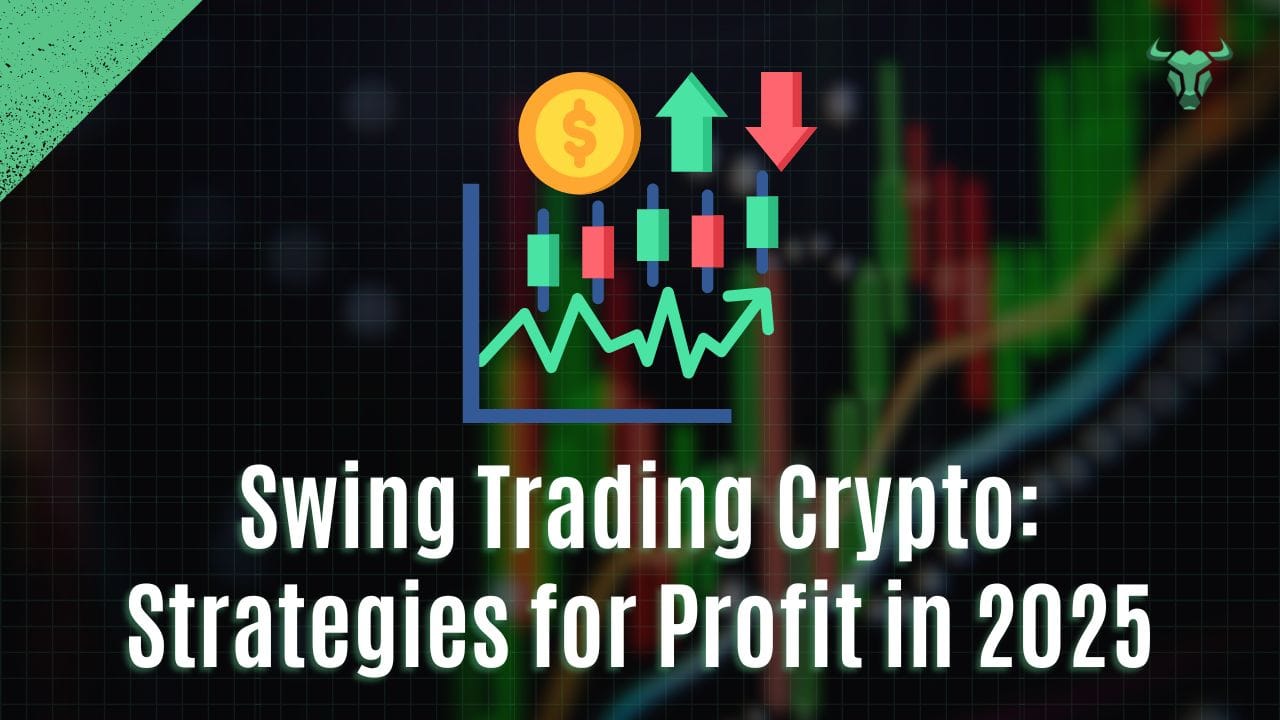
Thinking about trying your hand at swing trading crypto in 2025?
It's a solid plan.
You're looking to catch those bigger price swings, not just day-to-day noise.
This guide is all about helping you get there, using some smart tools and strategies.
We'll cover what swing trading crypto really means, how to spot good chances to trade, and what you need to actually do it.
Plus, we'll talk about managing your money and how to handle things when the market gets wild.
Let's get you ready for whatever 2025 throws at your trading.
Key Takeaways
- Swing trading crypto involves holding assets for a few days to a few weeks to profit from price changes, differing from quick day trades or long-term holds.
- Tools like Telegram trading bots, real-time charts, and multi-wallet support, as seen with platforms like BullX NEO, can make trading faster and easier.
- A good strategy combines technical analysis for chart patterns, understanding project news, and strict risk management like stop-loss orders.
- Knowing when to enter and exit trades, and how to manage your open positions, is key to making profits and protecting your capital.
- Staying updated on new trends, blockchain tech, and next-gen trading platforms will keep you ahead in the fast-moving crypto world of 2025.
Understanding Swing Trading Crypto
So, you're looking to get into swing trading crypto, huh?
It's a pretty popular way to try and make some gains in the market.
Basically, swing trading is all about catching those price swings that happen over a few days or maybe a couple of weeks.
You're not trying to get rich overnight like some day traders, and you're definitely not holding for years like a long-term investor.
It's that middle ground, trying to profit from the ups and downs in between.
Defining Swing Trading in the Crypto Market
When we talk about swing trading in crypto, we're talking about holding assets for a short to medium term, usually anywhere from a few days to a few weeks.
The goal is to capture a portion of a predicted price move.
Think of it like riding a wave – you want to get on as it starts building and get off before it crashes.
This approach relies heavily on technical analysis, looking at charts and indicators to figure out when a price might move up or down.
It's a bit different from just buying and holding, where you're less concerned with short-term fluctuations.
For example, you might see a coin like XRP showing signs of an upward trend, and decide to buy in, aiming to sell it a week or two later for a profit.
You're not trying to predict the exact top or bottom, just a significant move within that timeframe.
This strategy is really about timing the market's swings, and tools like BullX NEO can help you spot these opportunities faster.
Key Differences from Day Trading and Long-Term Investing
It's easy to get swing trading mixed up with other styles, but they're quite different.
Day trading means you open and close positions all within the same day.
You're looking for very short-term price movements, often happening within hours or even minutes.
It's fast-paced and requires constant attention.
On the other hand, long-term investing, or 'hodling' as some call it, is about buying an asset and keeping it for months or years, believing in its long-term growth potential.
Swing trading sits right in the middle.
You hold positions for days or weeks, aiming to capture bigger price swings than day traders but without the long-term commitment of investors.
This means you're less exposed to the minute-to-minute noise of the market but still active enough to benefit from significant price action.
For instance, if Bitcoin is showing signs of a short-term rally after a dip, a swing trader might enter, aiming to profit from that rally over a week or two, while a day trader might try to scalp smaller profits within a single day, and a long-term investor might just keep buying more regardless of the short-term price action.
Identifying Profitable Swing Trading Opportunities
Finding those sweet spots for swing trading takes practice.
You'll want to look for assets that are showing clear trends or patterns.
Technical indicators are your best friend here.
Things like moving averages, MACD, and RSI can give you clues about momentum and potential reversals.
Chart patterns, such as flags, pennants, or head and shoulders, can also signal upcoming price movements.
You're looking for situations where a cryptocurrency has moved in one direction for a while and might be due for a pullback or a continuation.
For example, if a coin has been in a steady uptrend and then consolidates for a few days, a swing trader might look for a breakout signal to enter a long position.
Conversely, if an asset has seen a sharp rise and starts showing signs of weakness, a swing trader might consider a short position.
The key is to find assets with enough volatility to offer a decent profit potential within your holding period.
It's also wise to keep an eye on broader market sentiment; sometimes, a general market downturn can affect even promising individual assets, as seen when Bitcoin experienced a significant dip towards $113,000.
Using tools that can quickly analyze market data, like those integrated with BullX NEO, can really help you spot these opportunities before others do.
Essential Tools for Swing Trading Crypto
To really get a handle on swing trading crypto, you need the right gear.
It’s not just about picking a coin and hoping for the best; you need tools that give you an edge.
Think of it like having a good set of wrenches when you're fixing something – they make the job easier and the results better.
Leveraging Trading Bots for Efficiency
Trading bots can be a game-changer, especially when you're trying to catch those price swings that happen over days or weeks.
They can automate a lot of the repetitive tasks, like monitoring charts or executing trades based on your pre-set rules.
For instance, a platform like BullX NEO is built for speed on the Solana network, letting you manage trades right from Telegram.
This means you can react quickly without being glued to a desktop.
Using a bot can free up your time and help you avoid missing out on opportunities because you weren't watching at the exact moment.
It’s about working smarter, not just harder.
Utilizing Real-Time Analytics and Charts
Charts are your best friend in swing trading.
You’ll want to get comfortable with looking at price action, volume, and using indicators.
Tools that provide real-time data are super important.
You need to see what’s happening now, not what happened yesterday. This includes things like:
- Price charts with different timeframes (hourly, daily, weekly)
- Volume indicators to see how much of a coin is being traded
- Technical indicators like RSI or MACD to spot trends and momentum
Having access to this information quickly, perhaps through a platform that integrates charts directly, makes a big difference.
You can spot potential entry and exit points more easily.
For example, seeing a coin break above a resistance level with high volume is a signal you want to catch in real-time.
The Role of Multi-Chain and Multi-Wallet Capabilities
Crypto isn't just one blockchain anymore.
Many traders spread their assets across different networks, and managing that can get messy.
Tools that support multi-chain and multi-wallet functions are really helpful.
Imagine being able to see and manage your holdings on Solana, Ethereum, and other chains all from one place.
Platforms like BullX NEO are designed with this in mind, allowing you to connect multiple wallets and switch between them easily.
This simplifies your workflow and gives you a clearer picture of your overall crypto portfolio.
Being able to manage different wallets and chains from a single interface streamlines your trading process significantly.
It means less time spent logging in and out of different apps and more time focused on actual trading decisions.
You can even explore tokens across different networks without much hassle.
Developing a Robust Swing Trading Strategy
So, you want to get good at swing trading crypto?
That's smart.
It's a way to catch those bigger price moves, usually over a few days or weeks, without having to watch charts every second like a day trader.
To really make it work, you need a solid plan.
This isn't just about picking random coins; it's about having a system.

Technical Analysis for Swing Trading
This is where you look at charts and price action.
You're trying to spot patterns that suggest where the price might go next.
Think about support and resistance levels – these are price points where a crypto has historically had trouble going lower (support) or higher (resistance).
When a price bounces off these levels, it can signal a good entry or exit point.
Moving averages can also help you see the general trend.
For example, if a crypto's price is consistently above its 50-day moving average, that's often seen as a bullish sign.
You'll want to get familiar with indicators like the Relative Strength Index (RSI) to see if a coin is overbought or oversold.
The goal is to find coins that are showing signs of an upcoming price swing.
Fundamental Analysis in Crypto Swing Trading
While technicals are big, you can't ignore what's happening behind the scenes.
Fundamental analysis looks at the actual value and potential of a crypto project.
Is there a new development coming up?
Is the team behind the coin reputable?
What's the overall market sentiment for that specific coin or the crypto market in general?
For instance, if Bitcoin's price is showing signs of a potential surge, that might influence your decisions on other altcoins.
You might use tools like BullX NEO to track news and sentiment around specific tokens, helping you make more informed decisions beyond just chart patterns.
Understanding the project's utility and adoption rate is also key.
You can explore trading opportunities on platforms like BullX NEO, which offers real-time token discovery from Pump.fun and Solana trending charts.
Risk Management Techniques for Crypto Traders
This is probably the most important part.
Crypto is volatile, and you can lose money fast if you're not careful.
You absolutely need to decide how much you're willing to risk on any single trade before you even enter it.
A common rule is to risk only 1-2% of your total trading capital per trade.
Setting stop-loss orders is non-negotiable.
This is an automatic order to sell a crypto if it drops to a certain price, limiting your losses.
Take-profit orders are also useful; they lock in your gains when the price hits a target.
You also need to manage your overall exposure.
Don't put all your money into one trade or one type of crypto.
Diversification helps spread the risk.
Using a platform like BullX NEO can help manage multiple wallets and accounts, making it easier to keep your risk contained and your strategy organized.
It's about protecting your capital so you can keep trading another day.
Remember, even with a good strategy, losses can happen, especially in a market where Bitcoin's price can swing wildly due to whale selling activity.
A well-defined strategy, combined with strict risk management, is your best defense against the unpredictable nature of the crypto market. It's not about being right every time, but about minimizing losses when you're wrong and maximizing gains when you're right.
Executing Trades with Precision
So, you've done your homework, picked your crypto, and you're ready to make a move.
But when exactly do you jump in, and when do you get out?
Getting your entry and exit points right is pretty much the whole game in swing trading.
It’s not just about picking the right coin; it’s about timing it perfectly.

Entry and Exit Point Strategies
Think of your entry point as the moment you step onto a moving train.
You want to get on smoothly, not get left behind or fall off.
For swing trading, this often means looking for a coin that's showing signs of breaking out of a consolidation pattern or bouncing off a support level.
You're looking for that initial upward momentum.
- Look for confirmation: Don't just buy because the price is going up. Wait for a clear signal, like a strong candle breaking through resistance or a bullish crossover on your indicators.
- Consider the trend: Is the overall market bullish? Is the specific crypto you're watching in an uptrend? Trading with the trend is usually a safer bet.
- Use support and resistance: Buying near a strong support level or selling as a coin approaches resistance can give you a better risk-reward ratio.
Exiting is just as important.
You don't want to hold on too long and watch your profits disappear, nor do you want to sell too early and miss out on further gains.
Setting clear exit targets based on your analysis is key.
Platforms like BullX NEO can help you manage these exits more effectively, especially with their advanced order types.
Setting Stop-Loss and Take-Profit Orders
These are your safety nets and profit targets.
A stop-loss order automatically sells your crypto if the price drops to a certain level, limiting your potential losses.
A take-profit order does the opposite; it sells your crypto when it reaches a predetermined profit level, locking in those gains.
- Stop-Loss Placement: Place it below a recent support level or a key moving average. You want enough room for normal price fluctuations but not so much that a significant downturn won't trigger it.
- Take-Profit Placement: Set this based on your analysis of potential resistance levels or a target percentage gain. Don't be greedy; securing profits is better than watching them vanish.
- Adjusting Orders: As a trade moves in your favor, you might want to trail your stop-loss up to protect accumulated profits. This is something you can often automate or manage easily within trading tools.
Using these orders isn't a sign of weakness; it's a sign of smart trading. They remove emotion from the equation, which is a big win in the volatile crypto market. You can set these up quickly with tools like BullX NEO, which integrates directly into your trading workflow.
Managing Open Positions Effectively
Once you're in a trade, the work isn't over.
You need to keep an eye on things and be ready to adjust.
This means monitoring your open positions, checking in on the market news, and being aware of any shifts in the overall trend.
- Regular Check-ins: Depending on the timeframe of your swing trade, you'll want to check your positions daily or every few hours. Don't stare at the charts constantly, but don't forget about them either.
- Re-evaluating Your Trade: If new information comes out that significantly impacts the crypto you're holding, you might need to reconsider your entry or exit points. For example, major news about Ethereum could change its price trajectory Ethereum (ETH) has experienced a significant surge.
- Scaling Out: Sometimes, instead of selling your entire position at once, you might sell a portion as it hits a profit target and let the rest run with a tightened stop-loss. This can be a good way to manage risk while still participating in potential upside.
Being disciplined with your trade management, using tools like BullX NEO for quick adjustments, and sticking to your plan are what separate successful swing traders from the rest.
It’s all about precision and control.
Advanced Swing Trading Techniques
Utilizing Limit Orders for Automated DEX Trades
When you're swing trading crypto, getting the best price is key.
Limit orders let you set a specific price at which you want to buy or sell a token.
This is super useful on decentralized exchanges (DEXs) where prices can jump around.
Platforms like BullX NEO make this easy, letting you set these orders directly through Telegram.
You can essentially automate your entry or exit without constantly watching the charts.
This means you can catch those specific price points you're looking for, even when you're not actively trading.

The Art of Token Sniping and Copy Trading
Token sniping is about getting into a new token right as it launches, aiming to profit from the initial surge.
It requires speed and precision.
BullX NEO is built for this, with its fast indexing and execution on the Solana network.
You can set up sniper buys to automatically purchase tokens as soon as they hit certain liquidity thresholds.
Copy trading is another advanced move.
You can follow and automatically replicate the trades of successful traders.
This can be a good way to learn and profit from others' strategies, especially if you're still developing your own.
It’s like having a seasoned trader working alongside you.
Adapting Strategies to Market Volatility
Crypto markets are known for their wild swings.
Being able to adjust your strategy is what separates profitable traders from those who struggle.
When the market gets choppy, you might want to reduce your position sizes or tighten your stop-loss orders.
Conversely, during strong trends, you might let your winners run a bit longer.
Understanding the overall market sentiment and being ready to pivot your approach is vital.
For instance, if you see a lot of institutional demand pushing Bitcoin to new highs, like the recent surge that boosted MicroStrategy's stock, you might adjust your altcoin strategies accordingly.
Keeping an eye on broader trends, like the record open interest in Bitcoin, can give you clues about potential market direction.
Platforms like BullX NEO can help you react quickly to these shifts with their real-time analytics and automated trading features.
Navigating the Crypto Landscape in 2025
Emerging Trends in Digital Asset Trading
The crypto market in 2025 is really something else.
You've probably seen how institutional money has poured in, especially with those spot Bitcoin ETFs attracting billions.
It feels like the market is just getting started, with supply getting tighter too.
This means there could be some good chances for swing traders, but you still gotta watch out for the risks.
Bitcoin's been hanging out above $100,000, and Ethereum bounced back nicely.
Keep an eye on XRP and Solana too; they can make big moves, especially when big economic news drops.

The Impact of Blockchain Technology on Trading
Blockchain itself keeps changing how we trade.
Think about how fast things are moving on networks like Solana.
Platforms like BullX NEO are built right into this, using Solana's speed for things like sniping trades or setting up automated buys.
It’s not just about Bitcoin anymore; there are so many different tokens and blockchains to watch.
You need tools that can handle this complexity, like managing multiple wallets or trading across different chains without a hitch.
This is where the tech really makes a difference for swing traders.
Staying Ahead with Next-Generation Trading Platforms
To really do well in 2025, you need to be using the latest tools.
Platforms that offer speed, security, and ease of use are key.
BullX NEO, for example, is a Telegram-based bot that lets you trade directly from your phone, super fast.
It’s got features like real-time security checks and multi-wallet automation, which is pretty neat.
You can discover new tokens, set limit orders, and even copy other traders, all without leaving Telegram.
Getting set up is usually pretty simple, often just connecting your wallet and funding it.
It’s about making trading more accessible and efficient, so you can focus on finding those profitable swings instead of wrestling with complicated software.
It’s a good idea to check out places like Vancouver's top crypto exchange to see what’s out there and how they compare.
Get ready for 2025!
The crypto world is changing fast, and staying ahead means using the right tools. Imagine trading meme coins quicker than ever, with lower costs and smart features that help you make better choices.
Whether you're a seasoned trader or just starting out, having a fast and easy-to-use platform is key.
Don't miss out on the next big thing in crypto trading.
Visit our website today to learn how you can trade smarter and faster!
Conclusion
So, you've learned about swing trading crypto and how to approach it in 2025.
It's not about getting rich quick, but about smart moves and sticking to your plan.
Remember to always do your own research, manage your risks, and never put more into trading than you can afford to lose.
Tools like BullX NEO can help make things smoother, offering fast trades and useful data right in Telegram, which is pretty handy.
Keep learning, keep practicing, and you'll get better at spotting those opportunities.
Good luck out there.
Frequently Asked Questions
What exactly is swing trading in the crypto world?
Swing trading in crypto is like catching waves. You try to ride a price change, or 'swing,' for a few days or weeks. You're not trying to make money super fast like day traders, nor are you holding for years like long-term investors. You're looking for those sweet spots in between, aiming to profit from the ups and downs.
How is swing trading different from other ways of trading crypto?
Think of it this way: day trading is like sprinting, trying to profit from tiny moves within a single day. Long-term investing is like a marathon, holding assets for months or years. Swing trading is more like a middle-distance run, holding trades for days or weeks to capture bigger price swings, but without the super-long commitment.
What tools do I really need to swing trade crypto effectively?
To be a good swing trader, you'll want tools that give you quick info and help you act fast. This includes using trading bots, like BullX NEO, that can automate trades and find opportunities. You'll also need good charts and real-time data to see what's happening, and the ability to manage different crypto wallets easily.
Can you give me some tips on making a solid swing trading plan?
Sure! A good plan involves looking at charts (technical analysis) to spot trends and predict where prices might go. You also need to understand the news and what's happening with the crypto itself (fundamental analysis). Most importantly, always have a plan to protect your money, like setting limits on how much you're willing to lose on a trade.
How do I actually make a trade and manage it when I'm swing trading?
When you swing trade, you need to know the best time to buy in and sell out. Setting 'stop-loss' orders to limit your losses and 'take-profit' orders to lock in gains is super important. You also need to keep an eye on your trades and be ready to adjust if the market changes its mind.
What's new or special for swing trading crypto in 2025?
In 2025, expect new trends like faster trading platforms, maybe even more advanced bots that can do things like 'snipe' tokens (buy them right when they launch) or copy what successful traders do. Staying updated on new tech and understanding how the market shifts will be key to making good trades.
More BullX NEO Guides:
